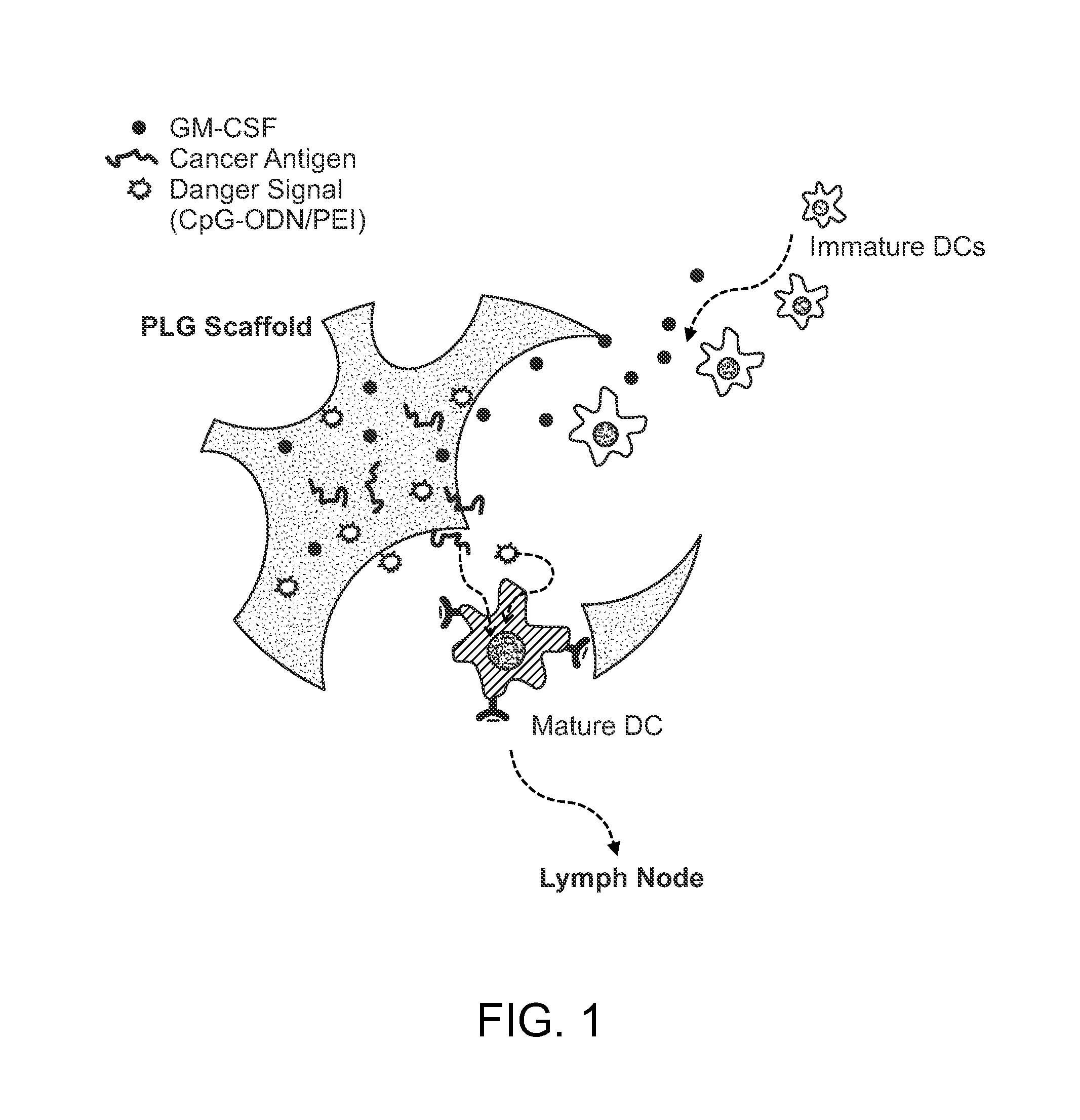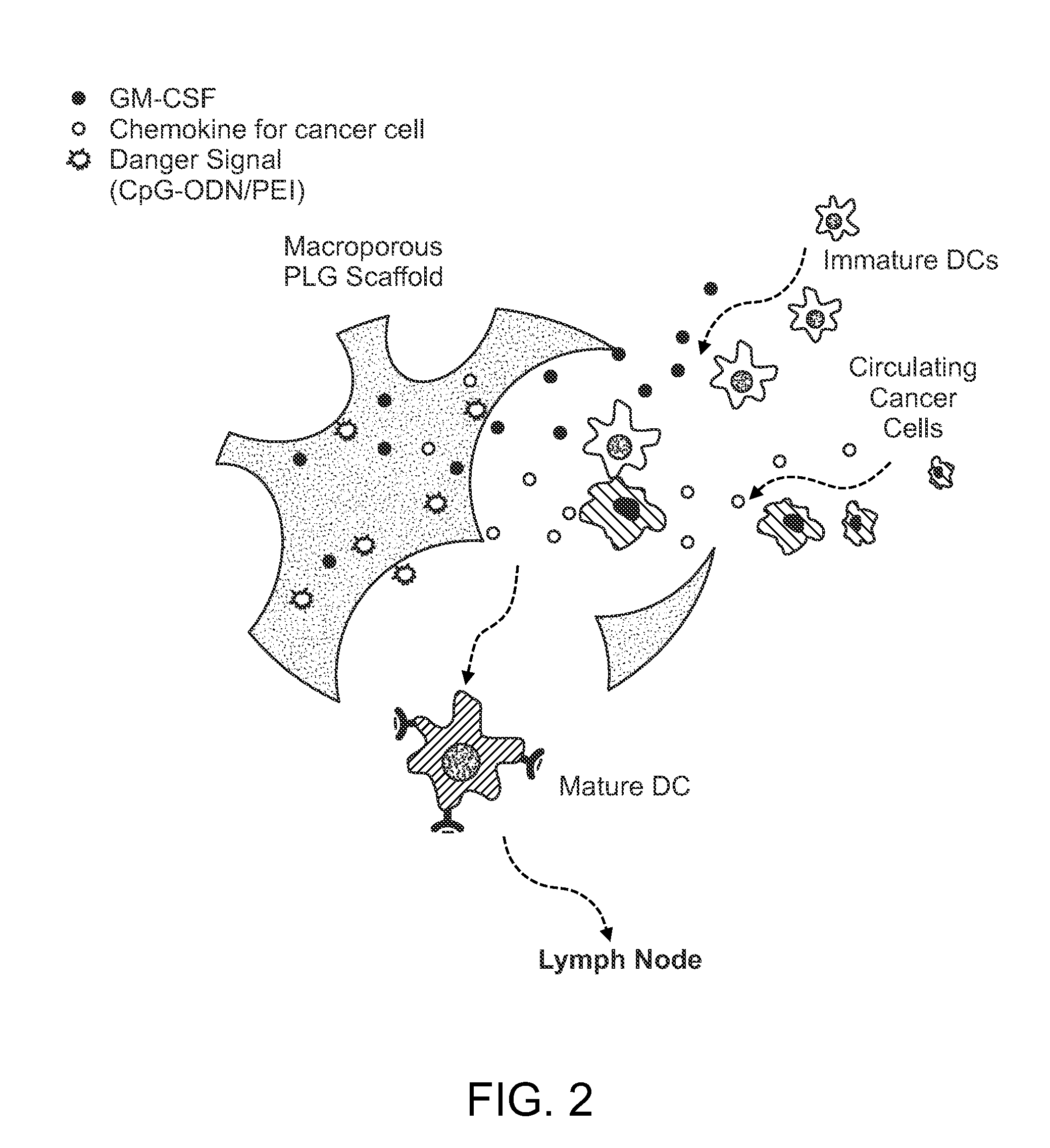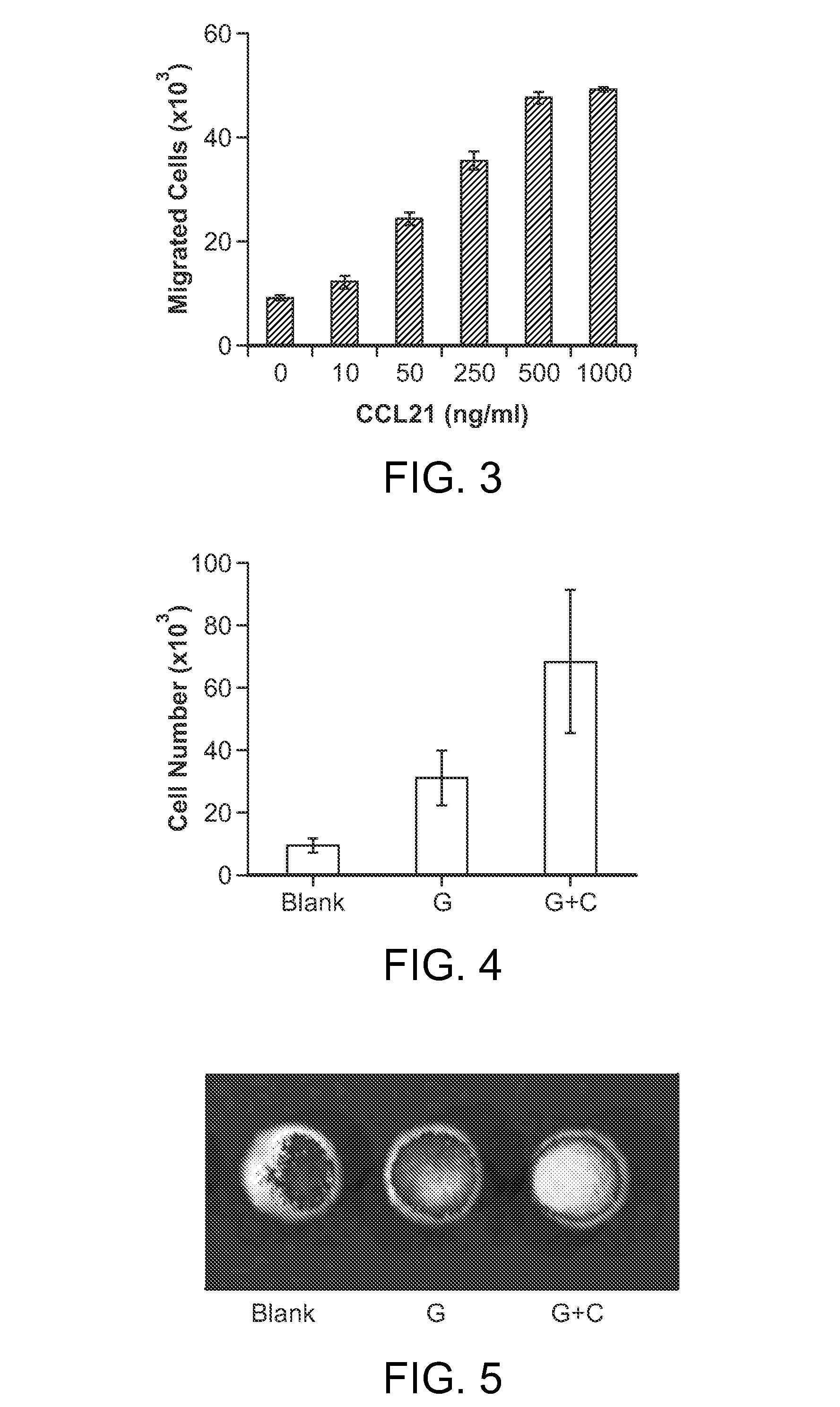In Situ Antigen-Generating Cancer Vaccine
a cancer vaccine and in situ technology, applied in the field of cancer vaccines, can solve the problems of invasive ex vivo techniques and high cost, and achieve the effect of reducing the responsiveness to lps and upregulating the activation of immune cells
- Summary
- Abstract
- Description
- Claims
- Application Information
AI Technical Summary
Benefits of technology
Problems solved by technology
Method used
Image
Examples
example 1
In situ Antigen-Generating Cancer Vaccine by Recruiting Cancer Cells and Subsequent Destruction of the Recruited Cancer Cells by External Stimuli
[0079]Described below are examples of gold nanorod-loaded cancer vaccine scaffolds to recruit leukemic cells and their subsequent destruction via NIR irradiation-mediated hyperthermia to generate cancer antigen coupled with heat shock protein. To demonstrate the scaffolds are capable of recruiting cancer cells, mouse leukemic cells (C1498) were tested in transwell assay using CCL-21 as the chemoattractant. C1498 showed strong migration to the gradients of CCL-21 (FIG. 3).
example 2
In vivo Recruitment of Leukemic Cells
[0080]In vivo recruitment of leukemic cells was characterized using GFP-expressing leukemic cells. PLG scaffolds without any chemokines (Blank), loaded with GM-CSF (G), and loaded with GM-CSF and CCL-21 (G+C) were implanted to C57BL / 6J mice subcutaneously and GFP-leukemic cells were injected into blood via tail vein injection at Day 4. The scaffolds were retrieved at Day 6 and the cells in scaffolds were isolated and analyzed in FACS (FIG. 4). In addition, the scaffolds retrieved from mice injected with fluorescent-NP-labeled leukemic cells were imaged under fluorescent imaging instrument (Xenogel) (FIG. 5). Both results presented that CCL-21 released from scaffold increased the recruitment of leukemic cells in the animal.
example 3
Hyperthermia-Mediated Antigen Generation
[0081]To achieve hyperthermia-mediated antigen generation from recruited cancer cells, gold nanorods (GNRs) were incorporated in PLG macroporous scaffold (GNR-PLG scaffold) during the fabrication step (FIG. 6). GNR-PLG scaffold had 250˜440 um pores and GNRs were incorporated over the whole scaffold, resulting in dark color in the resulting PLG scaffold. The surface of GNRs were modified with poly(ethylene glycol) (PEG) to remove the toxicity from original surfactants (cetyltrimethylammonium bromide) used in GNR-fabrication step which is known as toxic agents to the cells.
[0082]GNRs incorporated in PLG scaffold showed intrinsic maximum absorption at ˜810 nm with maximum intensity, which is desirable for in vivo irradiation due to minimum absorption by tissue and water in that range of wavelength (FIG. 7A). Upon irradiation with 808 nm continuous diode laser, the temperature of GNR-PLG scaffold was increased to 40° C. (FIG. 7B) from room tempera...
PUM
| Property | Measurement | Unit |
|---|---|---|
| diameter | aaaaa | aaaaa |
| diameter | aaaaa | aaaaa |
| temperature | aaaaa | aaaaa |
Abstract
Description
Claims
Application Information
 Login to View More
Login to View More - R&D
- Intellectual Property
- Life Sciences
- Materials
- Tech Scout
- Unparalleled Data Quality
- Higher Quality Content
- 60% Fewer Hallucinations
Browse by: Latest US Patents, China's latest patents, Technical Efficacy Thesaurus, Application Domain, Technology Topic, Popular Technical Reports.
© 2025 PatSnap. All rights reserved.Legal|Privacy policy|Modern Slavery Act Transparency Statement|Sitemap|About US| Contact US: help@patsnap.com



